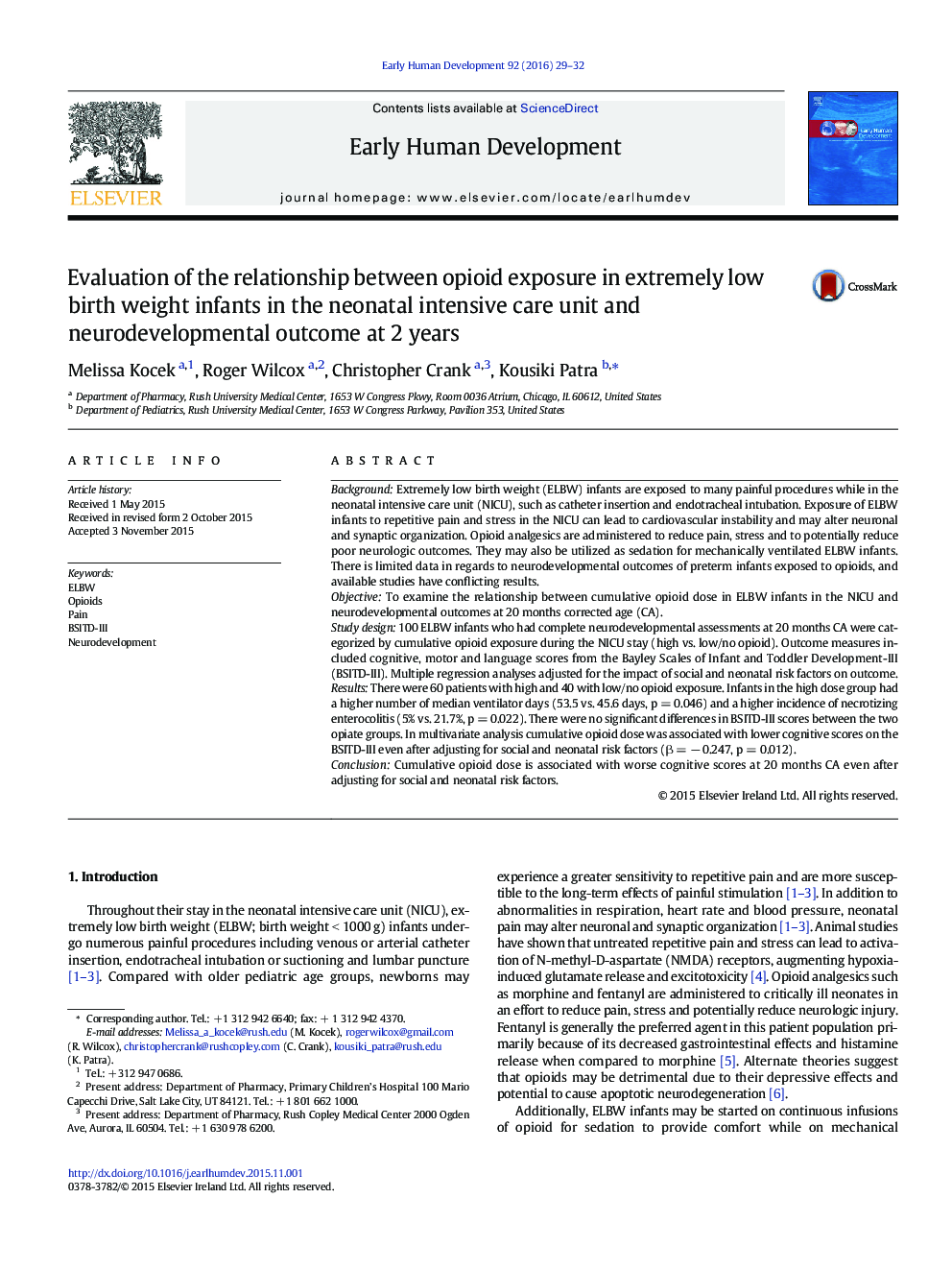| کد مقاله | کد نشریه | سال انتشار | مقاله انگلیسی | نسخه تمام متن |
|---|---|---|---|---|
| 3916353 | 1599474 | 2016 | 4 صفحه PDF | دانلود رایگان |
• There is limited data with respect to neurodevelopment outcome of ELBW infants who receive opioids and data is conflicting.
• There is a need to study a contemporary cohort of ELBW as NICU and obstetric management has evolved.
• Cumulative exposure to opiates is associated with worse cognitive scores at 2 years of age in a recent cohort of ELBW.
BackgroundExtremely low birth weight (ELBW) infants are exposed to many painful procedures while in the neonatal intensive care unit (NICU), such as catheter insertion and endotracheal intubation. Exposure of ELBW infants to repetitive pain and stress in the NICU can lead to cardiovascular instability and may alter neuronal and synaptic organization. Opioid analgesics are administered to reduce pain, stress and to potentially reduce poor neurologic outcomes. They may also be utilized as sedation for mechanically ventilated ELBW infants. There is limited data in regards to neurodevelopmental outcomes of preterm infants exposed to opioids, and available studies have conflicting results.ObjectiveTo examine the relationship between cumulative opioid dose in ELBW infants in the NICU and neurodevelopmental outcomes at 20 months corrected age (CA).Study design100 ELBW infants who had complete neurodevelopmental assessments at 20 months CA were categorized by cumulative opioid exposure during the NICU stay (high vs. low/no opioid). Outcome measures included cognitive, motor and language scores from the Bayley Scales of Infant and Toddler Development-III (BSITD-III). Multiple regression analyses adjusted for the impact of social and neonatal risk factors on outcome.ResultsThere were 60 patients with high and 40 with low/no opioid exposure. Infants in the high dose group had a higher number of median ventilator days (53.5 vs. 45.6 days, p = 0.046) and a higher incidence of necrotizing enterocolitis (5% vs. 21.7%, p = 0.022). There were no significant differences in BSITD-III scores between the two opiate groups. In multivariate analysis cumulative opioid dose was associated with lower cognitive scores on the BSITD-III even after adjusting for social and neonatal risk factors (β = − 0.247, p = 0.012).ConclusionCumulative opioid dose is associated with worse cognitive scores at 20 months CA even after adjusting for social and neonatal risk factors.
Journal: Early Human Development - Volume 92, January 2016, Pages 29–32
